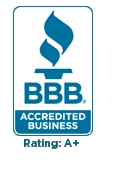Telephone etiquette is one of the most important aspects of business customer service strategy because, whether provided in house or by phone answering services, it increases customer satisfaction. But what, exactly, is good telephone etiquette? Some rules are quantified in minutes on hold and numbers of rings — most experts say a business phone should never ring more than three times — while others are extremely vague, such as the idea that tone is the most important vocal skill in great phone etiquette. While these rules are certainly true and good to keep in mind, they aren’t extremely useful when it comes to either training great customer service agents or distinguishing truly outstanding phone answering services from mediocre call answering services.
Here are five more constructive ways to think about what constitutes top-notch phone customer service:
1 Being Incredibly Patient
Good customer service representatives must be extremely patient with each and every caller. It’s good to be efficient, especially when there are other people waiting in help queues, but customers will have an overall better experience with a company if they wait 30 seconds longer, but then feel their concerns are given due weight as soon as they get on the line.
2 Showing Attentiveness
It’s obvious that good customer service involves actively listening to customers, but that’s not enough; it’s important to demonstrate that attentiveness. Good customer service reps can do this by engaging in the conversation, punctuating it with tracking signs such as “I see” and “Wow, that must be frustrating.” A good rep should also be able to repeat the problem back to the customer in different words to show that he or she truly understands the situation.
3 Communicating Clearly
Customer service reps should be articulate, choosing a few clear words to explain rather than many unclear ones. This is a particularly important skill in situations where technical products are involved; it’s relatively easy to give a clear explanation of what time a storefront opens on Saturdays, but it’s much more difficult to explain what’s going on with a software update without devolving into jargon. That’s a challenge that should be met by specific training and practice.
4 Creating Good Boundaries
In nearly any material on customer service, the old adage “the customer is always right” makes an appearance, but it’s time to lay that slogan to rest. Instead of focusing on whether the customer is “right,” good customer service focuses on whether a customer can win within the reasonable constraints set by profitability, brand image, etc. If bending a small rule will give a customer a win without stepping outside those major limits, it’s probably worth it. But that doesn’t mean catering to every whim or fancy.
5 Looking for Ways to Say Yes
Good customer service agents can listen to a customer’s problem and look for ways to respond positively. Sometimes, this is just a matter of wording: Instead of saying “No, I’m sorry, that’s out of stock,” a better rep would choose to say “We’ll have that in stock next month, and I’d be happy to get it shipped to you as soon as possible!”.
Do you currently hire out your customer care to a phone answering service, or attempt to live up to these expectations in house? Discuss your reasoning in the comments.



